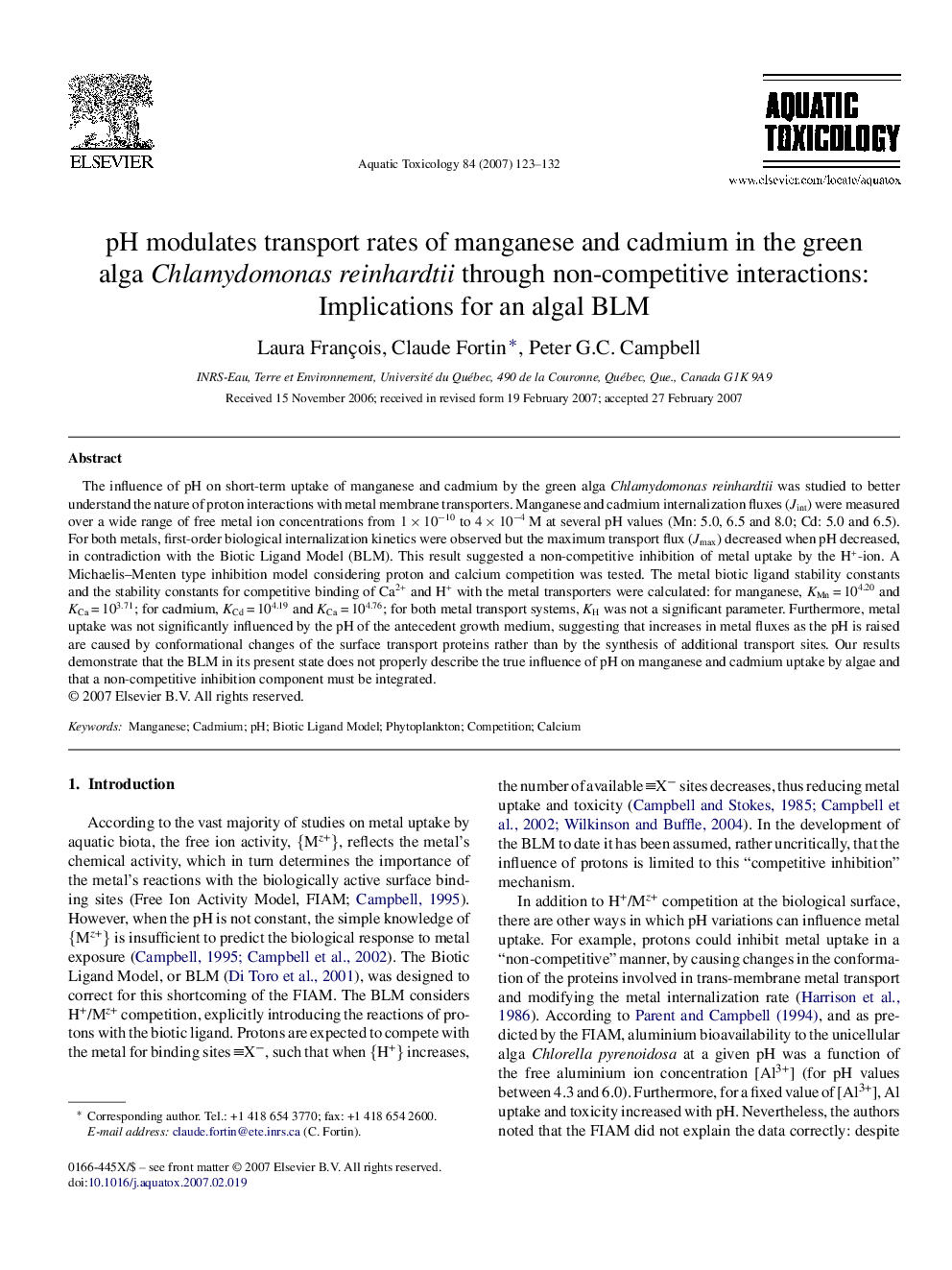| Article ID | Journal | Published Year | Pages | File Type |
|---|---|---|---|---|
| 4531033 | Aquatic Toxicology | 2007 | 10 Pages |
The influence of pH on short-term uptake of manganese and cadmium by the green alga Chlamydomonas reinhardtii was studied to better understand the nature of proton interactions with metal membrane transporters. Manganese and cadmium internalization fluxes (Jint) were measured over a wide range of free metal ion concentrations from 1 × 10−10 to 4 × 10−4 M at several pH values (Mn: 5.0, 6.5 and 8.0; Cd: 5.0 and 6.5). For both metals, first-order biological internalization kinetics were observed but the maximum transport flux (Jmax) decreased when pH decreased, in contradiction with the Biotic Ligand Model (BLM). This result suggested a non-competitive inhibition of metal uptake by the H+-ion. A Michaelis–Menten type inhibition model considering proton and calcium competition was tested. The metal biotic ligand stability constants and the stability constants for competitive binding of Ca2+ and H+ with the metal transporters were calculated: for manganese, KMn = 104.20 and KCa = 103.71; for cadmium, KCd = 104.19 and KCa = 104.76; for both metal transport systems, KH was not a significant parameter. Furthermore, metal uptake was not significantly influenced by the pH of the antecedent growth medium, suggesting that increases in metal fluxes as the pH is raised are caused by conformational changes of the surface transport proteins rather than by the synthesis of additional transport sites. Our results demonstrate that the BLM in its present state does not properly describe the true influence of pH on manganese and cadmium uptake by algae and that a non-competitive inhibition component must be integrated.
